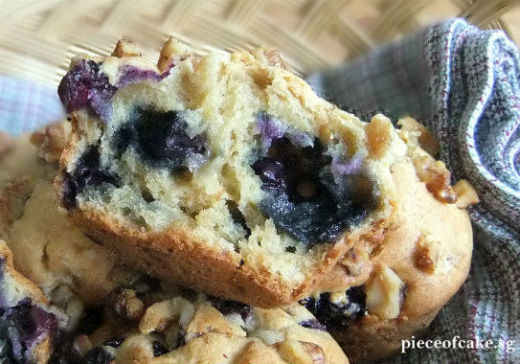This cake originated during colonial times in the Dutch East Indies and was believed to be the Dutch version of Baumkuchen (a layered cake resembling tree rings) incorporating popular local spices such as cinnamon, clove, mace and anise. Making this cake is very labour intensive as each layer is baked separately. Whenever I make this, preparing the cake batter takes me nearly an hour followed by another two over hours in front of the oven watching each layer grill. The layers need to be removed from the oven just as it is browned. Once, I took my eyes away from it for a few moments and that layer almost burnt!
Because it takes so much effort to make and has a lot of good quality ingredients, a large one (the size of the recipe below) can easily cost S$50-60. My instructor said that its definitely worth the effort to learn how to make this cake, so that you don’t have to pay so much for it outside, provided one has the patience to bake this!
I made this Kueh Lapis for my kids’ teachers as a gift for the upcoming Teacher’s Day. I wanted to bake something to thank them for all the hard work they have put into caring for and coaching their class. After thinking about it, I decided on this cake because the process of making Kueh Lapis is very much like a teacher’s job. I know my children’s teachers work hard at imparting knowledge and values to their students, patiently building into their lives a little at a time.
Happy Teacher’s Day to all the teachers out there and thank you for all your hard work!
Thousand Layer Cake (Kueh Lapis) – 9 x 9 inch square
Recipe from a Community Centre baking demo by People Associations’s trainer Ms. Tay Tai Song
Recipe from a Community Centre baking demo by People Associations’s trainer Ms. Tay Tai Song
Ingredients
- 500 g butter (Golden Churn tinned butter spread recommended – freeze the butter overnight then cut into pieces before using)
- 22 pieces of egg yolk
- 8 pieces of egg white
- 300 g of sugar
- 300 g condensed milk
- 220 g cake flour
- 1/2 tsp baking powder
- 1 1/2 tsp lapis spices (Recommended: 1/2 tsp nutmeg, 1 tsp cinnamon powder)
- 3 tbsp rum
Method
- Pre-heat the oven to 195 to 200 degree Celsius.
- Sift flour and spices together.
- Butter mixture: Beat frozen butter and condensed milk till white, then set aside.
- Egg mixture: Whisk egg whites and baking powder till stiff at medium speed. Add in sugar, then egg yolks one by one.
- Stir in flour into the egg mixture (I used hand folding).
- Mix in butter mixture into egg mixture in 3 rounds using a whisk (I used hand folding).
- Mix in rum till blended in.
- Line a square baking tin with paper, grease the paper well.
- Heat the tin for 2 minutes in the heated oven.
- Weigh out 130 g of batter and spread onto the baking tim. Bake the first layer till well browned.
- Turn the oven to grill mode. Place a second layer of 100g and grill this second layer till brown. Repeat the grilling process for all subsequent layers of 100g each, till all the cake batter is used up.
- Between each layer, press the cake down well using a lapis press.




















